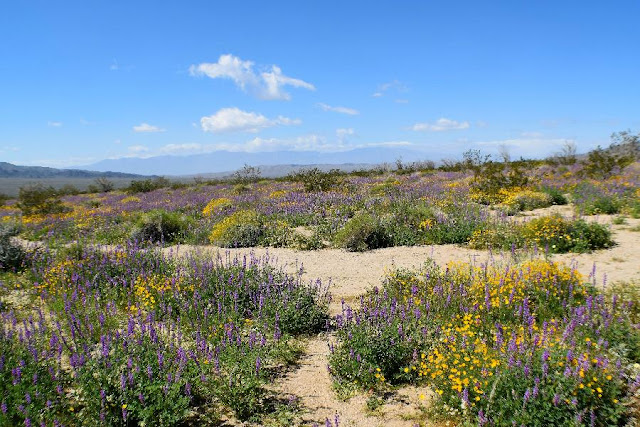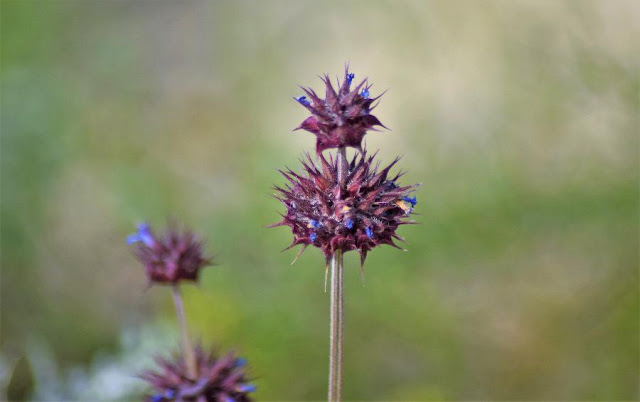Joshua Tree National Park is named for the Joshua Tree that grows primarily in the Mojave and Sonoran Deserts. Legend has it that Mormon pioneers named the tree after the biblical figure, Joshua, seeing the limbs of the tree as guiding the travelers westward. This is a huge park - we put on over 100 miles driving inside the park.
South Entrance to Joshua Tree National Park
We were fortunate to have been here when a rare "super bloom" was in progress in the desert. Above average rainfall and moderate temperatures produce this rare occurrence where the desert floor is blanketed with wildflowers in early March.
Skull Rock - the park is noted for its many unusual gneiss rock formations
Skull Rock
Another view
Joshua Trees
Joshua Tree
Another
Nearly 11,000 Foot Mount San Jacinto (snow-capped peak in clouds just right of center) taken from Keys View, the highest point in Joshua Tree National Park
Coachella Valley, the Salton Sea, and Palm Springs in the distance - it was hazy so they are difficult to make out - taken from Keys View
Chiriaco Summit - a small community that is primarily a travel stop - it has a store, restaurant, Post Office, antique shop and gas station along with a free RV campground and the General Patton Museum. This area was used by General Patton for a desert training center in WWII.
Lots of relics on display around the grounds - this is a Model T Dump Truck
Visible Gas Pumps from the early 1900s
History of the Chiriaco family who founded the village
Large prickly pear cactus in bloom
Some old tanks behind the museum
Our RV behind the tanks (last one on the left)
Our site
Some of the desert flowers and cacti near the campsite
California barrel cactus - rare and endangered due to loss of habitat

























































